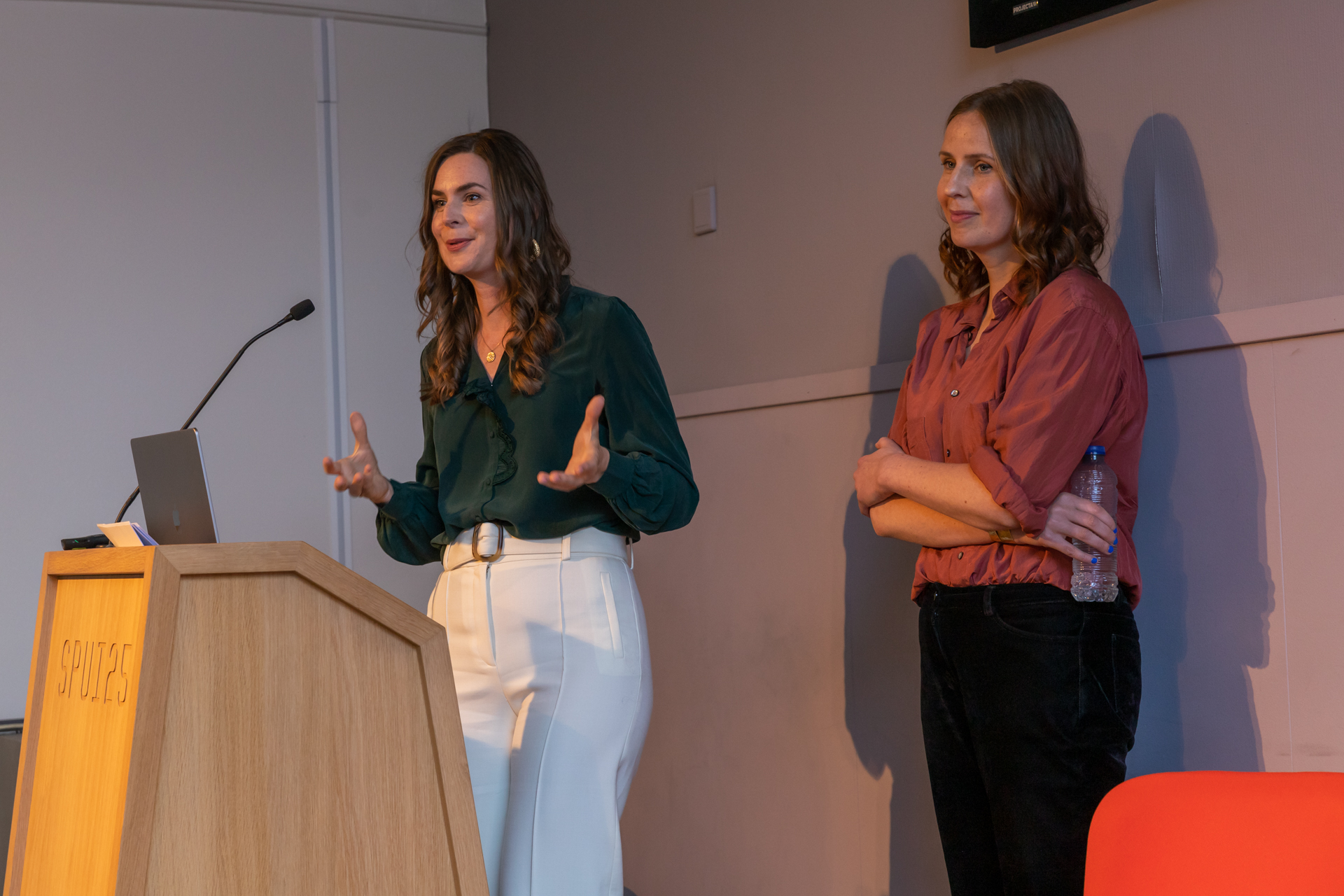When you know how your brain works, you better understand who you are
On Sept. 29, Lara Wierenga, together with graphic designer Dirma Janse, presented their new book Atlas of our Brain. In the presence of fellow scientists and other interested parties, they shared some of the stunning illustrations and mind-boggling facts that can be found in the book.
Visualising something provides grip and helps you understand yourself and others better. But how do you visualise the workings of the human brain, which is infinitely complex and requires constant nuance? It was no easy job, but Lara Wierenga and Dirma Janse dared to take on this task and worked for over two years on their Atlas of our Brain: A visual journey through the brain. That journey is not reserved for the reader; the creators themselves also experienced the making of their book as a voyage of discovery. 'We had to learn to speak each other's language,' says Wierenga.
Seemingly simple
In the autumn of 2020, Wierenga and Janse started looking for a publisher to realise their joint dream project, an illustrated book on the brain.

They were then asked to write down a list of questions that they could answer in the book using illustrations. 'Seemingly simple, but it wasn't,' Wierenga says of this process. In the end, they wrote down 30 brain questions, such as Why does music make us cry and move? How do you measure creativity? And: Do young brains get lazy from digital gadgets? Once the questions were drawn up, the search for answers could begin; they had to be both understandable and also do justice to the complexity of the brain. The same applied for the illustrations, of which Janse created hundreds for this book. It has not been an easy task, but the two were driven to come up with a clear overview of the brain and answer everything you ever wanted to know about it.
Dopamine machine
'Our goal was to make complex information as clear as possible, that you would understand at a glance what you need to know,' Wierenga explains. 'That does not mean that an infographic or illustration always simplifies reality,' stresses Janse. Even very complicated brain systems can be visualised truthfully, although to do so you have to dare to think outside the box. That is what Janse did, for example, when she decided to put the brain's dopamine system in the form of a futuristic-looking machine: the dopamine machine. 'As a scientist, that was tricky - it all had to be factually correct,' Wierenga acknowledges. But it was, and the full-page dopamine machine now provides a clever insight into why adolescents are so often rebelious and impulsive.
-

Lara Wierenga and Dirma Janse presenting their new book Atlas of our Brain -

Some of the people in the audience had already acquired a copy beforehand -

Pieter De Messemaeker works for the publishing house Uitgeverij Lannoo. Together with Lara and Dirma, he actively participated in the creation of Atlas of our Brain. -

Lieke Asma, philosopher and psychologist, also gave her take on the book by sharing some of her expertise as well. -

Singer Mr. Weazley (Benjamin Thode) and his guitarist connected the Science of the brain with Art through their musical expression -

The speakers enjoyed Mr. Weazley's performance and endorsed the significance of the bridge between art and science, especially for neuroscience. -

After Lieke's talk, the three formed a panel to answer questions, led by moderator Linde van Schuppen (on the right) -

After the presentation, there was the opportunity to congratulate Lara, which many did, including neuroscientist and professor emeritus, Dick Swaab who wrote two best-selling books on the brain: 'We are our Brains' and 'Our Creative Brains'.
What we don't yet know
The Atlas of our Brain is not a book that has to be read from cover to cover. You can choose a question that appeals to you, and throughout the book you will be referred to illustrations and stories that will give you more depth on this topic. Even if you do read it in full, the brain will continue to keep secrets from you. Fortunately, says Wierenga: 'We hope that people will start to marvel more about the brain after reading this book, including about everything we don't know yet.'
